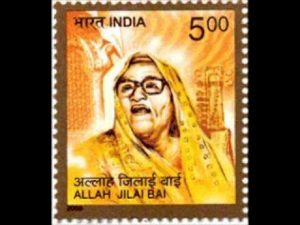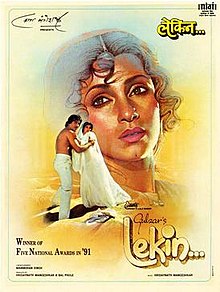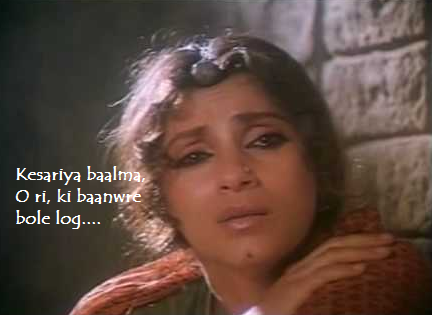Raaga Based Song of the Day: Kesariya baalma…
Raag Mand, Tal Dadra
We have completed twenty-three days of Raaga Based Songs of the Day. Our first post in the series was titled ‘Raaga Based Song Of The Day #1’ and the song was a Mohammad Rafi and Lata Mangeshkar song from the 1970 Shakti Samanta movie Pagla Kahin Ka: Tum mujhe youn bhula na paoge. It is in Raag Jhinjhoti, Tal Kaherava.
Our twenty-third post was titled ‘Raaga Based Song Of The Day #23’ and the song was a Mohammad Rafi song from the 1952 Vijay Bhatt movie Baiju Bawra: Man tadpat Hari darsan ko aaj. It is in Raag Malkauns or Malkaush, Tal Tintal.
This blog has a number of posts on Raaga based songs in Hindi movies titled similarly; for example: ‘The Best Raaga Based Songs in Hindi Movies – Raaga Bhairavi – Part I’.
In the last twenty-three days of sharing Raaga based songs of the day, I have given you songs based on Raag Jhinjhoti, Gara, Bhimpalasi, Madhuvanti, Shivaranjani, Bihag, Pahadi, Sarang, Pilu, Bhairavi, Khammaj, Charukesi, Kalyan or Yaman, Desh, Malgunji, Kirwani, Kedar, Bageshri, Megh Malhar, Bhupali, Ahir Bhairav and Malkaush.
Today, I give you a song in Raag Mand, Tal Dadra.
However, first, lets take up the value added learning of today. Today, we shall learn a little more in detail about Bilawal Thaat:
We already know that a Thaat is a mode in Hindustani music. In the system of Raagas that Pandit Vishnu Narayan Bhatkhande devised, he initially came up with 32 Thaats to which almost all raagas belonged. Later, he cut it down to just 10 Thaats. According to Bhatkhande, almost all raagas are variations of or are based on these ten basic thaats or musical scales: Bilawal, Kalyan, Khammaj, Bhairav, Poorvi, Marwa, Kafi, Asavari, Bhairavi and Todi. Therefore, if one were to pick a raga at random, it should be possible to find that it is based on one or the other of these thats. In the last twenty-three days, I have given you the Thaat to which the Raaga of the day belonged. For example, Raag Malkauns or Malkaush in our last post belongs to Bhairavi Thaat.
Raag Mand belongs to Bilawal Thaat. The other raagas belonging to this thaat are: Deskar, Hamsadhwani, and Bihag. In Bhatkhande’s system, the most basic Thaat is Bilawal. I have already told you in a previous post that Raag Bilawal occurs in Sri Guru Granth Sahib exactly half way through, that is, it is the 16th raaga out of 31 raagas in SGGS. It occurs from page 795 to 859. In an Akhand Paath (unbroken recital), it normally occurs on the next day morning and hence it is easy to conclude that it is an early morning raaga.
Being the most basic Thaat, Bilawal is used as a reference Thaat for all other thaats. A thaat must have seven notes (swar) out of a total of twelve notes (seven shuddha, four komal (Re, Ga, Dha, Ni) and one teevra (Ma) placed in an ascending order. Hence, a thaat has only aaroha. It would be easy to visualise that thaats by themselves are not sung but the raagas belonging to them are sung. I have already told you that thaats are named after the popular raaga of that thaat; eg, Bhairavi is a thaat named after the raag Bhairavi.
One reason for Bilawal being the basic thaat is because all the swars in the thaat are shuddha, ie, in their natural scale. One never hears of Bilawal raaga these days except in SGGS. However, a variation of the raag called Alhaiya Bilawal is very common.
Raag Mand, belonging to Bilawal Thaat has all shuddha swar too. Its Jati is (yesterday we studied jatis, if you recall) is Sampurna-Sampurna (Vakra). The best part of the raaga is that it is a light melody that sounds very natural (shuddha swar) but is rendered with great difficulty. No bandishes like bada-khayaals are rendered in this raaga. It is aptly suited for bhajans and ghazals. The basic format belongs to the folk tune of Rajasthan, which is the sung during festive occasions like birthdays, and marriages.
 And that brings me to the song called Kesariya baalma. Kesariya baalma is the most popular Rajasthani folk song sung in Raag Mand. The earliest recording of this song is by Allah Jilai Bai, a folk singer of Rajasthan who lived between 01 Feb 1902 and 03 Nov 1992. She was such a superb singer that by the age of ten she was singing in the darbar of Maharaja Ganga Singh of Bikaner. Both Padma Shri and Sahitya Akademi awards have been conferred on her.
And that brings me to the song called Kesariya baalma. Kesariya baalma is the most popular Rajasthani folk song sung in Raag Mand. The earliest recording of this song is by Allah Jilai Bai, a folk singer of Rajasthan who lived between 01 Feb 1902 and 03 Nov 1992. She was such a superb singer that by the age of ten she was singing in the darbar of Maharaja Ganga Singh of Bikaner. Both Padma Shri and Sahitya Akademi awards have been conferred on her.
In the 1991 movie Lekin, the same song in Raag Mand, Tal Dadra was sung by Lata Mangeshkar, my favourite female singer in the movies. Indeed, if you look at the list of songs in Raag Mand, you would see that most of these have been sung by Lata Mangeshkar. Here is a representative list:
|
Achhuut Kanya Mahal Baiju Bawara Deedar Shabab Meera Heer Ranjha Abhimaan Pakeezah Swarg Narak Lekin Tansen |
Ashok Kumar Lata Lata Lata, Rafi Lata Vani Jayaram Lata Lata Lata Lata Lata Khursheed |
 The 1991 movie Lekin was directed by Gulzar and starred Vinod Khanna, Dimple Kapadia, Amjad Khan, Alok Nath, Bina Banerjee and Hema Malini (in a special appearance).
The 1991 movie Lekin was directed by Gulzar and starred Vinod Khanna, Dimple Kapadia, Amjad Khan, Alok Nath, Bina Banerjee and Hema Malini (in a special appearance).
Guess what? The movie was produced by Lata Mangeshkar and the music director was her brother Hridyanath Mangeshkar, who won the 1991 National Award for Best Music Direction. Another song from the movie: Yaara seeli seeli got Lata Mangeshkar the National Award for Best Playback Singer (Female) as also it got both the National and Filmfare Awards for Best Lyricist for Gulzar, who was also the director of the movie.
Please enjoy a rendition by Lata Mangeshkar of the most popular folk song of Rajasthan, composed in Raag Mand, Tal Dadra by her brother Hridyanath Mangeshkar on the lyrics of Gulzar: Kesariya baalma….
Kesariyaa baalamaa o rii
ki tumase laage nain, nain re
Ra.ng liyo mai.n aaj a.ng a.ng tere ra.ng me.n
tan huaa man huaa kesariyaa
chaa.Ndanii hai raat ab to aa jaa piyaa
aa~
chaa.Ndanii hai raat ab to aa jaa piyaa
kesariyaa baalamaa o rii …
Takaraa ke sar ko jaan na de duu.N to kyaa karuu.N
kab tak firaaq-e-yaar ke sadame sahaa karuu.N
mai.n to hazaar chaahuu.N ki boluu.N na yaar se
qaabuu me.n apane dil ko na paa_uu.N to kyaa karuu.N
chaa.Ndanii hai raat ab to aa jaa piyaa
chaa.Ndanii hai raat ab to aa jaa piyaa, aa jaa piyaa
chaa.Ndanii hai raat ab to aa jaa piyaa
kesariyaa baalamaa o rii …
Version II
Kesariyaa baalamaa o rii
ki baa.Nvarii bole log
na mai.n ji_utii na mariyo mai.n
biarahaa mhaaro rog re
baa.Nvarii bole log, log re
kesariyaa …
Cha.Dhate din kii aa.Nch baToruu.N
til til, til til sab jal jaa_uu.N
Dhalate saa.Njh kii raakh kureduu.N
ret me.n ret me.n sab ral jaaye
na mil paayii na bichha.Dii mai.n
kaiso ye sa.njog re
baa.Nvarii bole log re …
Mhaaro thal kii laambii saa_i.nyaa
nis din nis din kuchh likh jaa_uu.N
mero sandeso koii sunaa do
jis ko vo jis ko vo dikh jaaye
priit ko dekhe nagarii vaale
piir na dekhe log re
baa.Nvarii bole log
kesariyaa …
We have intended to learn about Raaga based music whilst we entertain ourselves with Raaga based songs. So, lets, once again, take stock of our collective learning so far:
- On the first day we learnt about the Raaga system devised by Pandit Vishnu Narayan Bhatkhande, which is the prevalent system in Hindustani Classical Music and based on ten Thaats.
- On the second day we learnt about Tal or Taal.
- On the third day we learnt about characteristics of Raagas that included Swar, Jati, Thaat, Arohana and Avarohana, Vadi, Samvadi and Pakad.
- On the fourth day, we learnt about Sargam.
- On the fifth day, we learnt about notations used in Indian classical music or simply Swar Lipi.
- On the sixth day, we learnt about the Ras (sentiments) that Raagas evoke.
- On the seventh day, we learnt about various types of Swar: Shuddha, Achal, Vikrut, Komal and Teevra.
- On the eighth day, we learnt the parts of a composition in Indian Classical Music.
- On the ninth day, we learnt the names of some of the popular instruments used in Indian Classical Music.
- On the tenth day, we learnt about the sources of names of Raagas.
- On the eleventh day, we learnt about why Bhairavi is the first raag to be taught to beginners and also why it is the last in a performance.
- On the twelfth day, we learnt about Khammaj Thaat.
- On the thirteenth day, we learnt about Tal Punjabi Theka or Sitarkhani.
- On the fourteenth day, we learnt about Alap.
- On the fifteenth day, we learnt about List of Raagas (Raagmala) in my favourite book: Sri Guru Granth Sahib.
- On the sixteenth day, we learnt about tips for raaga identification.
- On the seventeenth day, we learnt the basics of Gharana system.
- On the eighteenth day, we learnt about Filmi Sangeet.
- On the nineteenth day, we learnt about the commonest Tal in Raagas: Tintal.
- On the twentieth day, we learnt about the Kafi Thaat.
- On the twenty-first day, we learnt a little more in detail about the classification of Raagas.
- On the twenty-second day, we learnt the essential differences between Bhairavi and Bhairav.
- On the twenty-third day, we learnt a little more in detail about the Jati or Jaati of a raaga.
- And today, on the twenty-fourth day, we learnt details of Thaat Bilawal, the most basic thaat in the Bhatkhande’s system of raagas.
There is much more still to be learnt and enjoyed.
Please stay tuned!
